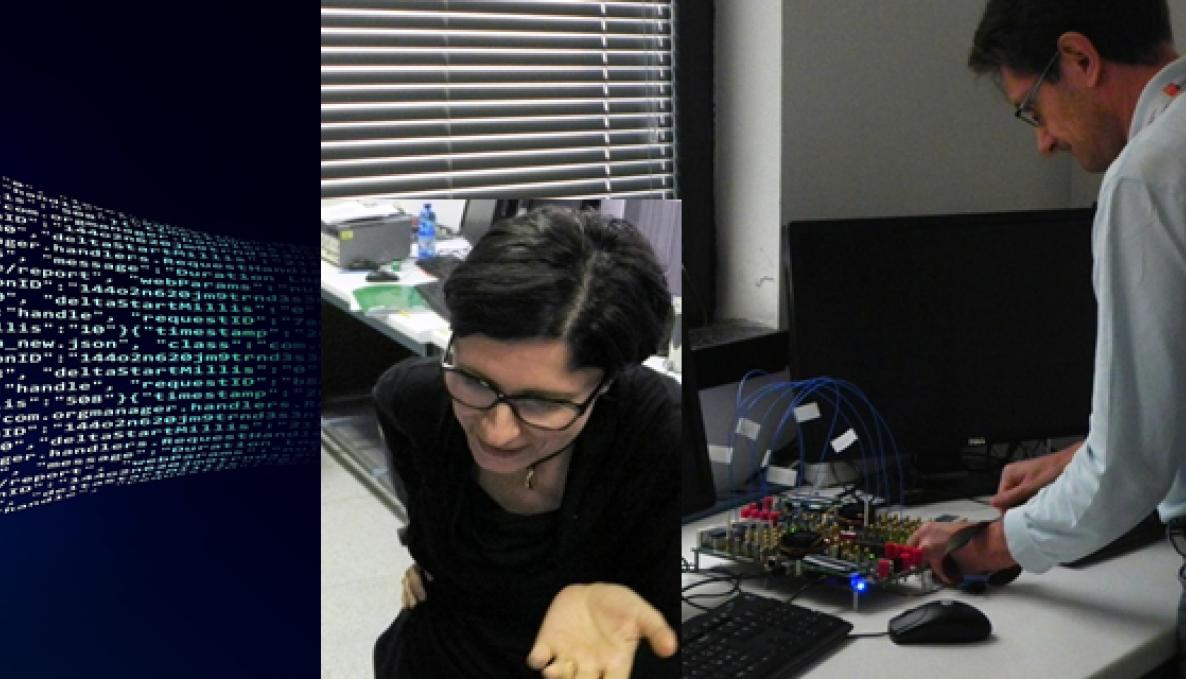NEXT generation internet and 5g connections: sant’anna school tecip communication technologies institute received triple recognition at 3RD FED4FIRE+ ENGINEERING INTERNATIONAL CONFERENCE in Paris

5G networks are the next generation of mobile internet connectivity. They offer more reliable and faster connections on mobile phones, providing the infrastructure needed to carry huge amounts of data (by 2020, analysts expect there will be up to 50 billion connected devices in the world). Combining cutting-edge network technology and the very latest research, the next generation 5G connections are expected to achieve end-user empowering applications for the promotion of integrated standards and the creation of large-scale worldwide interoperable test beds.
The Next Generation Internet (NGI) initiative, launched by the European Commission in 2016, aims to shape the future internet as an interoperable platform ecosystem that embodies openness, inclusivity, transparency, privacy, cooperation, and protection of data values. The NGI will ensure the progressive adoption of advanced concepts spanning the domains of artificial intelligence, Internet of Things, interactive technologies and more, while contributing to making the future internet more human-centric.
Among the objectives that the NGI is looking to achieve, the Fed4FIRE+ project from the Horizon 2020 Research and Innovation Programme, offers the largest federation worldwide of Next Generation Internet (NGI) testbeds, which provide open, accessible and reliable facilities supporting a wide variety of different research and innovation communities and initiatives in Europe. The Fed4FIRE+ project has the objective to run and further improve experimentation facilities covering technologies ranging from wireless, wired, cloud services and open flow. To make Fed4FIRE+’s federated infrastructure directly available for execution of innovative experiments by experimenters at both industrial (including SMEs) and research organisations, the concept of Open Calls was used.
The SoftFIRE Open Call Challenge provided to all 14 selected candidates access to SoftFIRE testbed. The Virtual EPC Recovery Experiment in SoftFIRE – VeriFIRE by Sant’Anna School TeCIP Institute was crowned the first prize (40.000€) winner for the programmability at the third Fed4FIRE Engineering Conference in Paris. The experiment was coordinated by Professor Luca Valcarenghi of TeCIP (Communication, Information and Perception) Institute and presented by Koteswararao Kondepu, researcher,and Francesco Giannone, Ph.D. student. This Virtual EPC Recovery Experiment in SoftFIRE – VeriFIRE project aimed at evaluating the performance of resilience schemes for virtualized mobile network functions (e.g., LTE-A or 5G). The experiment considered a resilience scheme featuring a second vEPC instance serving as a hot backup of a failed (due to virtual machine failure) vEPC located in the same hardware or at remote location.
The work of the Open Call Challenge Jury on selecting the best solutions was based on quality and innovation of the proposals. A second project “Latency-aware and self-Adaptive Service cHaining in reliable 5G/SDN/NFV infrastractures (LASH5G)” presented by Barbara Martini and Molka Gharbaoui from the Consorzio Nazionale Interuniversitario per le Telecomunicazioni CNIT - Pisa (affiliate member of the TeCIP Inst.), won the first prize at the demo session. The demo showed the deployment of an enhanced service chaining mechanism toward end-to-end orchestration, aiming at addressing latency, adaptability and availability requirements of 5G applications.
Latency can be defined in networking terms as how fast the network responds in the round-trip journey from the request to the response (input-output), typically measured in milliseconds. For 4G LTE networks there is a latency of less than 100 milliseconds. 5G, the next-generation cellular WAN, with ultra-low latency, massive connection density, and high reliability will decrease latency to sub-10 milliseconds and the network will be 10 times, and possibly up to 100 times, faster.
The LASH-5G orchestration system by Barbara Martini and Molka Gharbaoui, exploits heterogeneous resource control/management capabilities offered by cloud and network domains to dynamically provide service chains while (i) optimally selecting VFs over the path that minimizes the overall end-to-end latency, and (ii) promptly adapting established service chains to the current context offered by the cloud and the network domains (e.g., network load, user demands, operator needs).
The VERIfire project won the second place at the demo session.
The winners received the prizes during a plenary ceremony organized by third Fed4FIRE Engineering Conference in conjunction with the prizes given to the Demo Day of Fed4FIRE.
Photo Archive: Professor Valcarenghi and Barbara Martini at TeCIP Lab.



